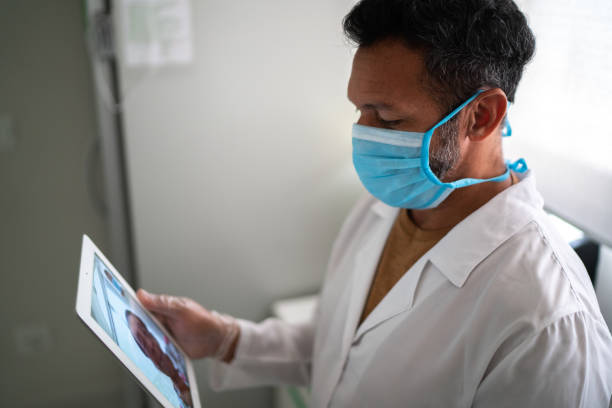Optimizing Care: Choosing Patient Monitoring Solutions Wisely
In the dynamic landscape of healthcare, where precision and timeliness are paramount, the selection of the right patient monitoring solutions emerges as a critical decision for healthcare providers. The overarching goal is to seamlessly integrate technology that not only monitors but optimizes patient care. As we delve into the intricacies of this pivotal decision-making process, it is imperative to recognize the profound impact that patient monitoring solutions have on the quality of healthcare services provided.

Patient monitoring solutions, the focal point of this guide, represent a continuum of innovations designed to enhance the efficiency and effectiveness of healthcare delivery. In an era where data-driven decision-making is becoming the norm, these solutions serve as the nexus between information and action, providing healthcare professionals with real-time insights into a patient's health status. The transformative potential of these technologies lies not only in their ability to detect anomalies promptly but also in their role in fostering a proactive approach to patient care.
As we embark on this exploration, it is crucial to anchor our understanding in the core concept that patient monitoring solutions are not just tools; they are enablers of a patient-centric paradigm. From bedside monitors capturing vital signs to advanced telemetry systems offering remote monitoring capabilities, the landscape is vast and nuanced. The introduction to this guide sets the stage for an in-depth exploration of the key considerations that underpin the process of choosing the most fitting patient monitoring solutions. By the end of this journey, healthcare providers will be equipped with the knowledge and insights necessary to navigate the vast array of options and make decisions that ultimately elevate the standard of patient care.
Understanding the Importance of Patient Monitoring Solutions
Patient monitoring solutions are the backbone of modern healthcare, offering real-time insights into a patient's health status. These systems encompass a wide range of technologies, from bedside monitors to advanced telemetry solutions. This section explores the significance of these solutions in enhancing patient outcomes and improving overall healthcare delivery.
Assessing the Specific Needs of Your Healthcare Setting
One size does not fit all when it comes to patient monitoring solutions. Different healthcare settings, whether hospitals, clinics, or home care, have unique requirements. This part of the guide delves into the importance of conducting a thorough assessment of the specific needs and workflows of your healthcare environment before making any decisions.
Compatibility and Integration: Ensuring Seamless Operations
The efficiency of patient monitoring solutions hinges on their compatibility and integration with existing healthcare systems. This section discusses the importance of selecting solutions that seamlessly integrate with electronic health records (EHRs), medical devices, and other critical components of the healthcare infrastructure.
Scalability for Future-Proof Solutions
Healthcare is a dynamic field, and your patient monitoring solutions should be able to grow with your institution. Scalability is a crucial consideration to ensure that your chosen solutions can adapt to the evolving needs of your healthcare facility, whether it's an expansion of services or an increase in patient volume.
Data Security and Compliance
Protecting patient data is paramount in healthcare. This section explores the critical considerations related to data security and compliance with healthcare regulations. From encryption protocols to adherence to industry standards, ensuring the security and privacy of patient information is non-negotiable.
User-Friendly Interface and Training
The effectiveness of patient monitoring solutions is closely tied to the ease of use and the proficiency of healthcare staff. This part of the guide emphasizes the importance of selecting solutions with user-friendly interfaces and the availability of comprehensive training programs to empower healthcare professionals to make the most of the technology.
Cost-Benefit Analysis: Balancing Budget and Performance
While cutting-edge patient monitoring solutions offer significant advantages, it's crucial to strike a balance between the features offered and the associated costs. This section provides insights into conducting a thorough cost-benefit analysis to make informed decisions that align with your budget constraints without compromising patient care.
Conclusion
In conclusion, choosing the right patient monitoring solutions requires a comprehensive understanding of the unique needs of your healthcare setting, as well as careful consideration of compatibility, scalability, data security, user-friendliness, and cost-effectiveness. By navigating these key considerations, healthcare providers can optimize patient care and pave the way for a more efficient and responsive healthcare ecosystem.



Comments
Post a Comment